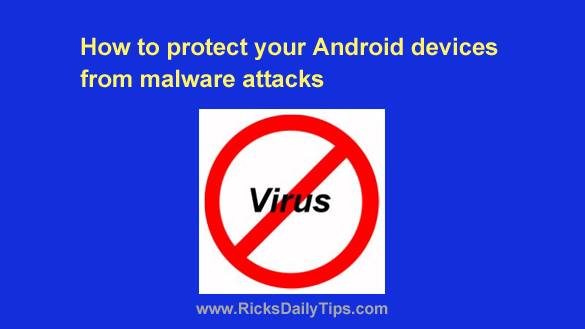 Hackers and scammers have been infecting Windows PCs with malware for years, and the problem is getting worse all the time.
Hackers and scammers have been infecting Windows PCs with malware for years, and the problem is getting worse all the time.
In fact, the majority of the questions I receive every week involve malware infections of one type or another.
My answers to those questions vary depending upon the nature of the attacks, but more times than not I respond by directing those folks to this post that explains how to completely remove malware from a PC.
For many years Mac users were led to believe that their machines were immune to malware attacks, but the truth is they weren’t immune to them at all.
The miscreants of the world simply chose to focus their attention on Windows machines because there were so many more of them to attack. I guess you could say they were out to “get the most bang for their buck”.
Well, nowadays that has changed, and Macs are now getting infected at an increasing rate.
Unfortunately, the massive proliferation of Android devices has made them a prime target of malware as well.
Crooks are now using malicious apps, text messages and emails to spread viruses, adware and ransomware to thousands of Android devices every day, and the problem is likely to get worse before it gets better.
Luckily, there are several things you can do to prevent your Android phone or tablet from falling victim to a malware attack, and they all happen to be free:
1 – Install a good antivirus app on your device and be sure to keep it updated at all times.
There are several great Android antivirus apps to choose from, but I use and recommend the fantastic AVG Antivirus for Android.
2 – Only install apps from the official Google Play Store and nowhere else.
While it’s true that many legitimate companies and online services provide download links for their official apps right on their own websites, the links themselves will almost always take you to their apps’ download pages in the Google Play Store.
While some malicious apps do slip through the cracks and end up in the Google Play Store, the odds of you installing a malware-laden app from there are a LOT lower than your odds of getting them from any other app store or website.
3 – Never open links in emails, SMS text messages or IMs in a Messenger-type app unless you are 100% certain that the emails and text messages are legitimate.
And truth be told, the instances in which you can be certain that those messages are truly legitimate will be few and far between.
Computer users have been unwittingly downloading malware to their machines for years simply by clicking on malicious links in emails, and now mobile devices are being attacked the very same way.
As you probably know, it’s extremely easy to spoof email addresses and phone numbers, so be careful any time you receive an email or text message even if it appears to be legit, lest you end up falling for a very realistic looking phishing email or fraudulent text message.
4 – Avoid visiting unfamiliar websites unless you know them to be safe.
If you find yourself on a potentially dangerous website by accident, exit the page immediately without tapping on any links.
5 – Perhaps most important of all, be sure to back up your photos and other files to the cloud backup service of your choice on a regular basis.
That way you’ll be able to recover your files if your device is ever hit by a successful ransomware attack or virus infection.
The Google Drive app makes it easy to back up your files to your Google Drive cloud storage account and it works seamlessly with virtually all Android devices.
Bottom line: The hackers and scammers of the world are now attacking Android devices by the millions.
The tips mentioned above can help you avoid malware attacks and keep your devices, your files and your sensitive information safe from all the attacks that will inevitably come your way.
Bonus tip: This post explains how to boot your Android phone or tablet into ‘Safe Mode’ for troubleshooting issues with your device.